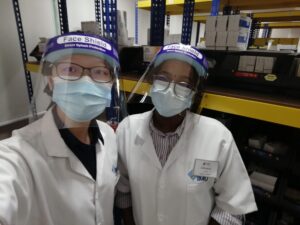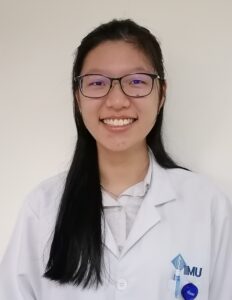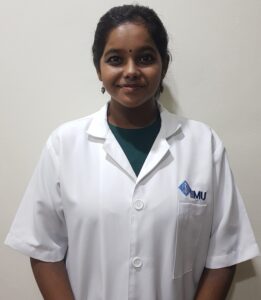[fusion_builder_container hundred_percent=”no” equal_height_columns=”no” menu_anchor=”” hide_on_mobile=”small-visibility,medium-visibility,large-visibility” class=”” id=”” background_color=”” background_image=”” background_position=”center center” background_repeat=”no-repeat” fade=”no” background_parallax=”none” parallax_speed=”0.3″ video_mp4=”” video_webm=”” video_ogv=”” video_url=”” video_aspect_ratio=”16:9″ video_loop=”yes” video_mute=”yes” overlay_color=”” overlay_opacity=”0.5″ video_preview_image=”” border_size=”” border_color=”” border_style=”solid” padding_top=”” padding_bottom=”” padding_left=”” padding_right=””][fusion_builder_row][fusion_builder_column type=”1_1″ layout=”1_1″ background_position=”left top” background_color=”” border_size=”” border_color=”” border_style=”solid” border_position=”all” spacing=”yes” background_image=”” background_repeat=”no-repeat” padding=”” margin_top=”0px” margin_bottom=”0px” class=”” id=”” animation_type=”” animation_speed=”0.3″ animation_direction=”left” hide_on_mobile=”small-visibility,medium-visibility,large-visibility” center_content=”no” last=”no” min_height=”” hover_type=”none” link=””][fusion_text]
Tiong Shao Qin (left) and Sarannya a/p Balakrishnan (right), proudly showcasing their accomplishment of successfully being vaccinated, and joining the fight against COVID-19 at Pantai Hospital Kuala Lumpur (PHKL).
The Elective module offered in Semester 6 of the Bachelor of Pharmacy (BPharm) (Hons) programme at International Medical University (IMU) has provided opportunities to the pharmacy students to acquire experiences and enhance competencies in pharmacy-related fields or explore their interests in non-pharmacy related areas. The elective placement is for a minimum duration of two weeks and is also a platform for the students to gain acquaintance to the community, hospital or pharmaceutical industries, in addition to the three internships undertaken by the students in the final year of the BPharm (Hons) programme. Tiong Shao Qin and Sarannya a/p Balakrishnan, two pharmacy students from the BP118 cohort of IMU BPharm (Hons) programme, chose to complete their two-month elective placement at Pantai Hospital Kuala Lumpur (PHKL), along with four other pharmacy students from the same cohort. Shao Qin shared, “I have always wondered exactly how hospital and clinical pharmacists’ working lives were like ever since I decided to choose pharmacy as my future career in Form 5. This two-month hospital placement at PHKL was a rewarding and remarkable experience for me.” Sarannya also mentioned that “Working at a hospital was always what I had envisioned for myself. The idea of being directly involved in a patients’ care from admission until discharge is fascinating to me. So, having this golden opportunity to experience hospital pharmacy from behind the scenes as students, especially during this COVID-19 pandemic was something we are truly grateful for.” Throughout their two-month elective hospital placement, they were rotated to various pharmacy departments at PHKL including the outpatient pharmacy, inpatient pharmacy, clinical pharmacy as well as total parenteral nutrition (TPN) and cytotoxic drug reconstitution (CDR) pharmacy. Since the pharmacist’s job scope is unique in each department, it was an excellent opportunity for these students who managed to gain exposure in each pharmacy department during their placement. “It was definitely eye-opening for me to discover the pharmacy workflow of a private hospital in Malaysia,” said Shao Qin. They were attached to the Outpatient Pharmacy Department for four weeks, whereby the satellite pharmacies available manage the patients’ medications prescribed by different speciality clinics, such as paediatrics, obstetrics and gynaecology, geriatric and respiratory conditions. [/fusion_text][/fusion_builder_column][/fusion_builder_row][/fusion_builder_container][fusion_builder_container hundred_percent=”no” equal_height_columns=”no” menu_anchor=”” hide_on_mobile=”small-visibility,medium-visibility,large-visibility” class=”” id=”” background_color=”” background_image=”” background_position=”center center” background_repeat=”no-repeat” fade=”no” background_parallax=”none” enable_mobile=”no” parallax_speed=”0.3″ video_mp4=”” video_webm=”” video_ogv=”” video_url=”” video_aspect_ratio=”16:9″ video_loop=”yes” video_mute=”yes” overlay_color=”” overlay_opacity=”0.5″ video_preview_image=”” border_size=”” border_color=”” border_style=”solid” margin_top=”” margin_bottom=”” padding_top=”20px” padding_right=”” padding_bottom=”20px” padding_left=””][fusion_builder_row][fusion_builder_column type=”1_2″ layout=”1_2″ spacing=”” center_content=”no” hover_type=”none” link=”” min_height=”” hide_on_mobile=”small-visibility,medium-visibility,large-visibility” class=”” id=”” background_color=”” background_image=”” background_position=”left top” background_repeat=”no-repeat” border_size=”0″ border_color=”” border_style=”solid” border_position=”all” padding=”” dimension_margin=”” animation_type=”” animation_direction=”left” animation_speed=”0.3″ animation_offset=”” last=”no”][fusion_text] The students helped the pharmacists and pharmacy assistants in packing the medications based on prescriptions and medication labels received. “From initially spending so much time searching for the right medications on the shelf, I can now quickly locate and pack them in a few minutes. I have also familiarised myself with the drug range available, along with the generic names, brand names and indications of the common medications,” said Shao Qin. [/fusion_text][/fusion_builder_column][fusion_builder_column type=”1_2″ layout=”1_2″ spacing=”” center_content=”no” hover_type=”none” link=”” min_height=”” hide_on_mobile=”small-visibility,medium-visibility,large-visibility” class=”” id=”” background_color=”” background_image=”” background_position=”left top” background_repeat=”no-repeat” border_size=”0″ border_color=”” border_style=”solid” border_position=”all” padding=”” dimension_margin=”” animation_type=”” animation_direction=”left” animation_speed=”0.3″ animation_offset=”” last=”no”][fusion_text]
[/fusion_text][/fusion_builder_column][/fusion_builder_row][/fusion_builder_container][fusion_builder_container hundred_percent=”no” equal_height_columns=”no” menu_anchor=”” hide_on_mobile=”small-visibility,medium-visibility,large-visibility” class=”” id=”” background_color=”” background_image=”” background_position=”center center” background_repeat=”no-repeat” fade=”no” background_parallax=”none” enable_mobile=”no” parallax_speed=”0.3″ video_mp4=”” video_webm=”” video_ogv=”” video_url=”” video_aspect_ratio=”16:9″ video_loop=”yes” video_mute=”yes” overlay_color=”” overlay_opacity=”0.5″ video_preview_image=”” border_size=”” border_color=”” border_style=”solid” margin_top=”” margin_bottom=”” padding_top=”20px” padding_right=”” padding_bottom=”20px” padding_left=””][fusion_builder_row][fusion_builder_column type=”1_1″ layout=”1_1″ spacing=”” center_content=”no” hover_type=”none” link=”” min_height=”” hide_on_mobile=”small-visibility,medium-visibility,large-visibility” class=”” id=”” background_color=”” background_image=”” background_position=”left top” background_repeat=”no-repeat” border_size=”0″ border_color=”” border_style=”solid” border_position=”all” padding=”” dimension_margin=”” animation_type=”” animation_direction=”left” animation_speed=”0.3″ animation_offset=”” last=”no”][fusion_text] From the moment the prescriptions are brought into the pharmacy, t
here is a meticulous process of prescription screening and ensuring the medications are packed and labelled accurately for the correct patient, to eliminate the possibilities of error. These processes need to be done in the quickest time possible, to deliver the best customer service to their patients. Sarannya mentioned, “The cooperation that exists amongst the pharmacists and pharmacy assistants in hectic situations behind the scenes is truly admirable.” In the Outpatient Department, the students had the chance to learn the counselling points for the latest inhaler devices, nasal sprays and other injector medication pens. “Through this attachment, our medication and device counselling skills are greatly improved under the supervision of the pharmacists in charge,” said the students. Besides that, students were educated on cold chain management of vaccines, including protocols to ensure the proper handling of thermosensitive items. Shao Qin mentioned that “I felt very grateful and excited to be assisting the pharmacists and pharmacy assistants in the supply of vaccine for clinic replacements at the outpatient department that mainly deals with the medications for paediatrics and women’s health.” [/fusion_text][/fusion_builder_column][/fusion_builder_row][/fusion_builder_container][fusion_builder_container hundred_percent=”no” equal_height_columns=”no” menu_anchor=”” hide_on_mobile=”small-visibility,medium-visibility,large-visibility” class=”” id=”” background_color=”” background_image=”” background_position=”center center” background_repeat=”no-repeat” fade=”no” background_parallax=”none” enable_mobile=”no” parallax_speed=”0.3″ video_mp4=”” video_webm=”” video_ogv=”” video_url=”” video_aspect_ratio=”16:9″ video_loop=”yes” video_mute=”yes” overlay_color=”” overlay_opacity=”0.5″ video_preview_image=”” border_size=”” border_color=”” border_style=”solid” margin_top=”” margin_bottom=”” padding_top=”20px” padding_right=”” padding_bottom=”20px” padding_left=””][fusion_builder_row][fusion_builder_column type=”1_2″ layout=”1_2″ spacing=”” center_content=”no” hover_type=”none” link=”” min_height=”” hide_on_mobile=”small-visibility,medium-visibility,large-visibility” class=”” id=”” background_color=”” background_image=”” background_position=”left top” background_repeat=”no-repeat” border_size=”0″ border_color=”” border_style=”solid” border_position=”all” padding=”” dimension_margin=”” animation_type=”” animation_direction=”left” animation_speed=”0.3″ animation_offset=”” last=”no”][fusion_text]
[/fusion_text][/fusion_builder_column][fusion_builder_column type=”1_2″ layout=”1_2″ spacing=”” center_content=”no” hover_type=”none” link=”” min_height=”” hide_on_mobile=”small-visibility,medium-visibility,large-visibility” class=”” id=”” background_color=”” background_image=”” background_position=”left top” background_repeat=”no-repeat” border_size=”0″ border_color=”” border_style=”solid” border_position=”all” padding=”” dimension_margin=”” animation_type=”” animation_direction=”left” animation_speed=”0.3″ animation_offset=”” last=”no”][fusion_text] Apart from that, extemporaneous preparations are necessitated to be prepared by the outpatient and inpatient pharmacists when the drug is available commercially but not available in the required dosage forms for the patient’s treatment. The pharmacy students were given opportunities to apply the knowledge learnt in Semester 3 of the BPharm (Hons) programme under the Extemporaneous Dispensing module. [/fusion_text][/fusion_builder_column][/fusion_builder_row][/fusion_builder_container][fusion_builder_container hundred_percent=”no” equal_height_columns=”no” menu_anchor=”” hide_on_mobile=”small-visibility,medium-visibility,large-visibility” class=”” id=”” background_color=”” background_image=”” background_position=”center center” background_repeat=”no-repeat” fade=”no” background_parallax=”none” enable_mobile=”no” parallax_speed=”0.3″ video_mp4=”” video_webm=”” video_ogv=”” video_url=”” video_aspect_ratio=”16:9″ video_loop=”yes” video_mute=”yes” overlay_color=”” overlay_opacity=”0.5″ video_preview_image=”” border_size=”” border_color=”” border_style=”solid” margin_top=”” margin_bottom=”” padding_top=”20px” padding_right=”” padding_bottom=”20px” padding_left=””][fusion_builder_row][fusion_builder_column type=”1_1″ layout=”1_1″ spacing=”” center_content=”no” hover_type=”none” link=”” min_height=”” hide_on_mobile=”small-visibility,medium-visibility,large-visibility” class=”” id=”” background_color=”” background_image=”” background_position=”left top” background_repeat=”no-repeat” border_size=”0″ border_color=”” border_style=”solid” border_position=”all” padding=”” dimension_margin=”” animation_type=”” animation_direction=”left” animation_speed=”0.3″ animation_offset=”” last=”no”][fusion_text] Shao Qin shared that, “I was able to assist the pharmacists and pharmacy assistants in the preparation of isoniazid and rifampicin syrups as well as mixing of creams and observe the process of preparing a sodium citrate mixture at outpatient and inpatient pharmacy, respectively.”
“We also had the chance to learn and observe the workflow of supply, distribution, stock replenishment and storage of psychotropics and dangerous drugs that are carried out by the outpatient pharmacists.”, said Shao Qin.
At the inpatient pharmacy, it is crucial for pharmacists to segregate and prioritise the prescriptions according to their urgency, as this pharmacy receives prescription orders from various medical wards, for instance, emergency departments, intensive care units (ICU), critical care units (CCU) and general wards. “When we were rotated to the inpatient pharmacy department for two weeks, we mainly assisted in checking labels against the prescriptions and packing the medications according to the priority of the prescription orders. We also learned to fill the prescriptions for the high-alert drugs, as well as help in the daily medication stock replenishment.” shared by both Shao Qin and Sarannya. In addition to that, it was great exposure for the pharmacy students to experience working at the TPN and CDR Pharmacy Departments. Calculations for TPN and chemotherapy cases were taught to the students here. “I was so delighted and appreciative for getting a chance to enter the cleanroom to observe the preparation of a TPN neonate bag and electrolyte admixture done by the pharmacist and pharmacy assistants under sterile conditions.”, said Shao Qin. In addition to observing a patient counselling session for oral chemotherapy done by a CDR pharmacist, both Shao Qin and Sarannya had the privilege to witness a lumbar puncture and intrathecal administration of chemotherapeutic drugs in a patient who suffers from central nervous system lymphoma (cancer) at the hospital’s Chemo Day Care Centre. [/fusion_text][/fusion_builder_column][/fusion_builder_row][/fusion_builder_container][fusion_builder_container hundred_percent=”no” equal_height_columns=”no” menu_anchor=”” hide_on_mobile=”small-visibility,medium-visibility,large-visibility” class=”” id=”” background_color=”” background_image=”” background_position=”center center” background_repeat=”no-repeat” fade=”no” background_parallax=”none” enable_mobile=”no” parallax_speed=”0.3″ video_mp4=”” video_webm=”” video_ogv=”” video_url=”” video_aspect_ratio=”16:9″ video_loop=”yes” video_mute=”yes” overlay_color=”” overlay_opacity=”0.5″ video_preview_image=”” border_size=”” border_color=”” border_style=”solid” margin_top=”” margin_bottom=”” padding_top=”20px” padding_right=”” padding_bottom=”20px” padding_left=””][fusion_builder_row][fusion_builder_column type=”1_2″ layout=”1_2″ spacing=”” center_content=”no” hover_type=”none” link=”” min_height=”” hide_on_mobile=”small-visibility,medium-visibility,large-visibility” class=”” id=”” background_color=”” background_image=”” background_position=
“left top” background_repeat=”no-repeat” border_size=”0″ border_color=”” border_style=”solid” border_position=”all” padding=”” dimension_margin=”” animation_type=”” animation_direction=”left” animation_speed=”0.3″ animation_offset=”” last=”no”][fusion_text] Next, the pharmacy students were allowed to shadow a clinical pharmacist and a critical care pharmacist for a week during their placement. Sarannya shared, “I admired how the pharmacist was able to contribute to their patients’ treatment plans by having discussions with doctors, nurses and patients regarding the choice of therapy for a certain ailment. Incidences like this remind me how important the role of a pharmacist is as the drug expert, especially in the clinical setting.” [/fusion_text][/fusion_builder_column][fusion_builder_column type=”1_2″ layout=”1_2″ spacing=”” center_content=”no” hover_type=”none” link=”” min_height=”” hide_on_mobile=”small-visibility,medium-visibility,large-visibility” class=”” id=”” background_color=”” background_image=”” background_position=”left top” background_repeat=”no-repeat” border_size=”0″ border_color=”” border_style=”solid” border_position=”all” padding=”” dimension_margin=”” animation_type=”” animation_direction=”left” animation_speed=”0.3″ animation_offset=”” last=”no”][fusion_text]
[/fusion_text][/fusion_builder_column][/fusion_builder_row][/fusion_builder_container][fusion_builder_container hundred_percent=”no” equal_height_columns=”no” menu_anchor=”” hide_on_mobile=”small-visibility,medium-visibility,large-visibility” class=”” id=”” background_color=”” background_image=”” background_position=”center center” background_repeat=”no-repeat” fade=”no” background_parallax=”none” enable_mobile=”no” parallax_speed=”0.3″ video_mp4=”” video_webm=”” video_ogv=”” video_url=”” video_aspect_ratio=”16:9″ video_loop=”yes” video_mute=”yes” overlay_color=”” overlay_opacity=”0.5″ video_preview_image=”” border_size=”” border_color=”” border_style=”solid” margin_top=”” margin_bottom=”” padding_top=”20px” padding_right=”” padding_bottom=”20px” padding_left=””][fusion_builder_row][fusion_builder_column type=”1_1″ layout=”1_1″ spacing=”” center_content=”no” hover_type=”none” link=”” min_height=”” hide_on_mobile=”small-visibility,medium-visibility,large-visibility” class=”” id=”” background_color=”” background_image=”” background_position=”left top” background_repeat=”no-repeat” border_size=”0″ border_color=”” border_style=”solid” border_position=”all” padding=”” dimension_margin=”” animation_type=”” animation_direction=”left” animation_speed=”0.3″ animation_offset=”” last=”no”][fusion_text] During Semester 6 of BPharm (Hons) programme under Clinical Pharmacy I module, we were taught on how to clerk clinical cases and discuss pharmaceutical care plans based on simulated case studies before eventually delivering clinical case presentations. “It was exciting to observe this practice in actual clinical settings, whereby we were allowed to read and discuss a real patient’s case with the supervising clinical pharmacist. She shared her working experience and clinical knowledge on the pharmacotherapeutic management with us, besides guiding us on interpreting the patient’s case notes. I was glad that I was given the chance to learn the pharmacotherapy involved for a COVID-19 patient managed at this hospital too. Her diligence and down-to-earth characteristics in guiding us and providing the best possible solution to the doctors, nurses and patients have motivated me to strive harder in the footsteps of pharmacists like her.”, said Shao Qin. Students also mentioned that they were lucky enough to be mentored by the ICU/HDU/CCU, critical care clinical pharmacist at PHKL, who also happens to be an alumnus of IMU. “Besides teaching and showing us around the ICU, he conducted several two-hour classes with the group of us, where he shared his experiences and management strategies for various medical conditions. I was particularly fascinated and inspired by the way he taught us about antibiotics used for the management of various infectious diseases, as he is truly knowledgeable in that field.”, said Sarannya. Apart from having the opportunity to don personal protective equipment (PPE), both Shao Qin and Sarannya were given permission to witness an autologous peripheral blood stem cell transplant done by a renowned consultant haematologist and assisted by the nurses and Cryocord workers.
“This entire experience has equipped me with the knowledge of medications available at private settings in Malaysia. Hence, when I undergo my compulsory attachment at a government hospital in Semester 8 later, I will be able to clearly differentiate between the medications available at both government and private institutions.”, said Sarannya.
[/fusion_text][fusion_text] “I was amazed at how efficiently the pharmacists did their work as they were so attentive, observant, knowledgeable and diligent! Their effort plays a huge role in detecting and rectifying any potential medication error which in turn, ensures maximum patient safety. It was also great to witness the multidisciplinary teamwork existing amongst healthcare workers to ensure the right medication and quality treatment are delivered to each patient. I am indeed inspired to work harder to enhance my knowledge and skills in the pharmacy field and hope one day I could be like them!”, said Shao Qin. It was certainly an unforgettable experience for the pharmacy students to have their two-month hospital placement at PHKL while being guided by such competent pharmacists. [/fusion_text][/fusion_builder_column][/fusion_builder_row][/fusion_builder_container]




